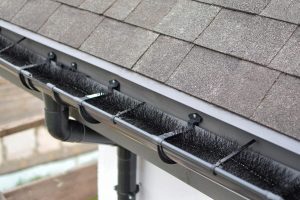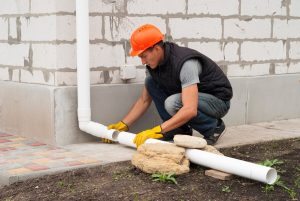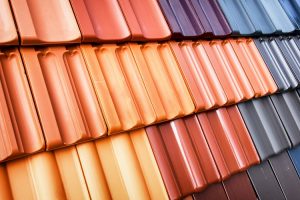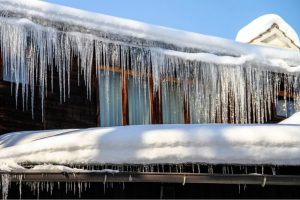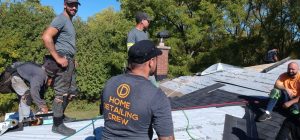How to Select the Best Roof Shingle Material for Your Home
Apr 25, 2023

When the time comes to select a roofing material that’s ideal for your property, you’ll find that there are so many options to consider. From popular materials like asphalt, composite and metal to the less known ones like MSR rolled roofing and shake, each roofing material has its pros and cons. For first time property owners, the choice could be purely aesthetic or economic. There’s a lot more to consider other than what you can comfortably afford or how it will look. Let’s go over 6 common roofing materials used in homes, their features, life expectancy, average costs, and maintenance demands to help you make a more informed decision.
- Asphalt Shingles
This is probably the most common roofing material used in modern homes. There are different categories or grades of asphalt shingles. The most commonly used is the traditional/organic asphalt shingles. Used since 1901, asphalt is a durable, cost-effective and versatile material for roofing. The shingles come in so many different colours and textures that it’s easy to find something that blends perfectly with your property’s exterior.
Organic versus fiberglass asphalt shingles
Organic asphalt shingles are manufactured using roofing felt or paper that is saturated with asphalt to make them water resistant. On the other hand, fiberglass shingles are made from glass and fibre then coated with asphalt. Roofing shingles are covered with mineral granules during the production process which helps to protect the roof from excessive sun exposure which can eventually cause the roof to deteriorate. Although organic asphalt shingles are also very durable, they can be prone to fire. They are also not as eco-friendly as the fiberglass asphalt shingles because a lot more asphalt is used when making them. If you reside in an area that is prone to fire, fiberglass asphalt shingles are the best option.
The different styles of asphalt shingles
There are two main styles of asphalt shingles: strip shingles and dimensional laminated shingles. With the strip shingle, a strip of shingle material with tabs is used to create the shingle whereas with the dimensional laminated shingle, multiple layers of tabs are used in order to give the shingle a good texture and dimension.
Do asphalt shingles need maintenance?
All roofing materials need proper maintenance in order to achieve their full-service life. However, asphalt shingles don’t require a lot of maintenance. Regular inspection must be done to prevent issues like curling or cracking that can expose your home to water damage. The shingles may also be damaged by mould or algae growth especially if the property is in a shady or wooded area.
How long do asphalt shingles last?
Asphalt shingles can have varying lifespans depending on the actual quality of the shingle. However, properly installed asphalt shingles can serve you for 15 to 40 years.
How much will it cost?
Asphalt shingles can cost anything from $300 to $400 per square foot. The dimensional laminated shingles usually cost more.
- Luxury Asphalt Shingles
Did you know that you can achieve the luxurious look of slate or wood without the cost implications? Luxury asphalt shingles are designed to mimic the look of costly materials like wood shake and slate. They are thickly laminated shingles that are made with shadow lines and the texture of expensive roofing products. The shingles are durable since they contain several layers of fiberglass that is coated in asphalt. Mineral granules are added to provide extra protection.
How long will luxury asphalt shingles last?
At D’Angelo Roofing, we’ve installed luxury asphalt shingles in many homes. This roofing material is often considered a long-term investment that offers property owners not only a stunning look but also good value for money. They are also known as premium or lifetime shingles. This is because they can last for up to 50 years with minimal maintenance.
Do premium shingles require maintenance
The shingles are thick, can be up to 5/8 inches. For this reason, very low maintenance is required. Premium shingles are durable and can be installed in homes with extreme climates.
How much will you spend on premium shingles?
Premium shingles can cost anything from $300 to $600per square foot. This includes the cost of the material as well as the installation.
- Wood Shakes and Shingles
If you’re looking for a more natural type of roofing for your home, consider wood shakes and shingles. This type of roofing is also known as ‘fivex’ or ‘royals’. Wood shakes are cut into specific sizes. Most of the wood shakes are manufactured from cedar. Cedar is used because it’s not only readily available but also naturally resistant to rot. Wood shingles are not only used for roofing but can also be ideal as an exterior wall siding.
Other than red cedar, white cedar, redwood, and cypress can also be used to make wood shingles. These wood species are used because they are resistant to rot hence there’s a reduced risk of weathering issues. When selecting the ideal wood shingle, consider the level of exposure to the elements, which will be determined by the roof pitch as well as the length and grade of shingle. Keep in mind that the exposure of the weathered surface increases with roofs that are highly pitched.
How to maintain wood shingles
Most wood shakes require low maintenance. However, if you invest in specialized wood species such as pine, you’ll have to invest in special installation and treatment to keep weathering problems at bay. Wood shingles also need to be properly sealed to prevent rotting, warping and splitting over time. Damaged wood shingles can be easily replaced.
How long will wood shingles last?
Wood shingles can last between 20 to 30 years if well maintained. If the wood shingles are installed in properties that are in damp wooded areas, they may not last as long.
How much will wood shingles cost?
The cost of installing wood shingles is roughly from $350 to $450 per square feet. This average includes the cost of the material plus installation service.
What’s the difference between wood shakes and wood shingles?
Wood shingles are sawn to specific dimensions but shakes, on the other hand, are usually made by hand or machine cut. They undergo a unique process of manufacturing that gives them a rustic, rough-hewn texture. Wood shakes also come in different grades such as taper split, hand-split, straight-split, and taper sawn shakes.
Most wood shakes are made from red cedar not only because of its availability but also due to its rot resistance abilities. Other wood species like cedar, redwood, and cypress are less resistant to rot. The shakes are designed with standard lengths of 18’’ to 24’’ and random widths.
One major difference between shakes and shingles is in the level of thickness. Wood shakes are much thicker than wood shingles. Installation is done using stainless steel or aluminum nails and a corrosion resistant box. A protective layer must be applied between each shake during installation.
Wood shakes are also more durable than wood shingles. with time, they tend to develop a soft grey patina. When damaged, the shakes can be easily replaced.
Wood shakes have a longer life expectancy compared to wood shingles. They can last 30 to 50 years with proper maintenance.
Additionally, you are likely to spend more on wood shakes compared to shingles. The cost of installing wood shakes can range from $400 to $500 per square foot.
- Clay Tile Roofing
Clay tiles are often used in residential and commercial properties because they are durable, stunning and fireproof. Clay tiles can take many shapes, the most popular ones being curved, flat and fluted.
Spanish tiles versus French tiles
The Spanish clay tile is often red and barrel-shaped. The French tile, on the other hand, has a fluted design. Clay tiles can also be designed to mimic the look of wood shakes or have a European villa style.
One major drawback of clay tiles is their heavyweight. This roofing material must be installed in a structure that can support its weight. In fact, clay tiles are known to weight 4 times as much as asphalt shingles.
When it comes to maintenance, clay tiles require virtually no upkeep. The material is resistant to fire damage and the rot of insect damage. It’s also able to stand up to rain, thawing and freezing cycles which are quite common in some parts of Canada.
Clay tile roof shingles can last for 50 to 100 years. This is a roofing material that delivers in terms of longevity and can cost you from $500 to $780 per square foot.
- Concrete Tile Roofing
Another durable material that is used for shingle roofing is concrete tiles. This is just as durable as clay tiles but costs way less. Just as with clay tile roofs, the structure must be able to handle the weight of a concrete tile roof. Furthermore, you can get lots of attractive options for concrete tile roofing today. The advances in roof pigmentation technologies have enabled manufacturers to deliver concrete tiles that come in varying colours and textures. Some concrete tiles are manufactured to deliver concrete tiles that look like wood shake, clay tiles and slate with unique textures and finishes.
A properly installed concrete tile roofing can last for 50 to 100 years or even more. This roofing material is fire resistant and has an A class fire rating. Unlike other options like asphalt tiles, concrete tiles can withstand strong winds and hail storms. Concrete tiles cost more than clay tile shingles. Expect to spend anywhere from $450 to $575 per square foot if you choose concrete tile roof shingles.
- Copper roofing
Copper roofs are often installed in historic buildings. They have a way of making a property look older than it is. This roofing material can last for hundreds of years without the need to offer a replacement. The beauty of copper roofing is not only in its unique look but also the fact that it is extremely light and comes in numerous styles. Homeowners can customize the look of their property and have a beautiful finish that stands out in their neighbourhood.
There are some drawbacks of copper roofing. For a start, this roofing material is quite costly and beyond the budget of the average homeowner. Copper is not a material that’s readily available in the market and it can be a challenge to find large quantities of this material to cover an expansive roofing project. Additionally, not all roofers are comfortable handling copper and poor installation can lead to streaks and a low curb appeal for your property. You will need to find a roofer who specializes in copper roofing in your area and in most cases, you’ll have to pay top dollar for the installation service.
What is the recommended pitch range?
One important factor to consider when choosing a roofing material for your home is the slope of the roof, also known as the roof pitch. The classic composite shingles can only be installed if the roof pitch is within a certain ratio. Different roofing materials have a recommended pitch range. Although the rules can sometimes be broken, it is important to ensure that you don’t exceed the low range of the recommendation. You may be forced to install other unconventional roofing types like seam metal roofing or rolled roofing because of the slope.
What is roof pitch and why does it matter?
In simple terms, pitch is a term used to indicate the level of rise a roof has compared to the run (this is the horizontal measurement of the roof). The roof pitch is an important measurement that will affect the health and lifespan of your roof. Roof pitch is presented in ratio form e.g. 2:12 or 2/12. The first number is the vertical or height measurement of the roof whereas the second number denotes the horizontal or length measurement of the roof. The horizontal measurement of the roof is always 12 units. Therefore, a roof pitch of 2/12 means that for every 12 horizontal feet, the roof changes 2 feet in vertical height. In most homes, the roof pitch is between 4/12 which indicates a moderate slope and 8/12 which is a steep slope. Some roofs have extreme slopes i.e. 1/4/12 which is almost flat.
Roofing materials for low-pitched roofs
Many homes that were built in the 60s had a low-pitched roof. This was considered a fashionable style of building homes where a pitch of 1/12 was used to help drain water. Most Victorian-era houses have a high-pitched roof with slopes as high as 18/12.
Low pitched roofs are often recommended in more urban, contemporary style houses and industrial complexes and shacks. There are different types of roofing materials recommended in low pitched roofs. They include:
Built-up roofing: BUR is made of alternating layers of bitumen and reinforced with fabrics to offer adequate protection and durability.
Torch down roofing: Made with a single layer membrane, this type of roofing material is heat activated by a torch during installation. The installation process can be time-consuming and complex making it a lot more expensive than most traditional roofing materials.
Rubber membrane: Roofs made of EPDM, which is a type of rubber, are often shallow-sloped. The rubber is applied on the roof with glue or mechanical anchors.
Consider the general guidelines on what roofing materials to install based on the pitch. For instance, wood and slate can be installed in steeper roofs but they shouldn’t be installed below the 4/12 lower range. In fact, asphalt shingles should be installed on roofing that has a pitch of 4/12 to 20/12. Clay or cement tiles can be installed in a wide range of roof pitches, but you may need to invest in double underlayment for pitches of 2.5/12 to 4/12.
Choosing the ideal roofing material for your garage
If your garage is detached from the rest of your home, you’ll have to shop for a roofing material that fulfills the needs of this structure. While you have the option to go with the same roofing material that is installed on the rest of your home, you can always choose something different if you want to. It all depends on what you want to achieve. When choosing the roofing for your garage, consider the following options:
- What offers the most curb appeal?
Your garage roofing will still be visible and is often viewed as an extension of your home’s roof. If you have revamped your garage to create a living space on the upper floor such as offices or an apartment, it becomes part of your overall property that you must ensure it looks good. If your main goal is to get the most curb appeal, you may want to match the roofing in your home with the garage. That makes the most sense and is easier to implement.
The main advantage of matching the garage roofing with what’s used in the rest of the house is that it provides continuity and makes both buildings to appear as part of one property. If you will need to replace the roofing in your home, choose garage roofing that will also complement the look and maintain continuity.
- How is the garage used?
Some garages, especially the detached ones, are converted into living spaces. They can act as a playroom, gym or an office for those who have home-based businesses. If your garage is used for more than just parking at night, you need to consider a roofing material that’s very durable. The roofing should not only complement the rest of your home design but also be able to withstand the elements and provide other features required when roofing living spaces like proper insulation.
- Are you storing items in your garage?
If you store flammable or hazardous items in your garage such as paints, oils, fuels, and other materials, you must install a roofing material that is non-flammable. There are numerous options for fireproof roofing products. On the other hand, if your garage is used to store items that could be damaged by water, the roofing material should be long lasting with great waterproofing features. Metal roofing is highly recommended on garages that are often used for storage compared to traditional options like asphalt shingles.
The metal roofing doesn’t have to look plain and boring. You can select metal roofing that mimics the shape of cedar shakes, tiles or slate if you want the garage’s roof to match the rest of your home. The beauty of metal roofing is that it will provide you with the extra protection you need and ensure the contents in your garage are safe.
- How is the pitch of the garage?
Some homeowners build low slope garages in order to reduce the cost of construction. In fact, one of the main benefits of having a garage that is detached from the rest of your building is that you can cut down costs by choosing a low slope roof. If the roof declines two pitches or less, it could mean a smaller surface to work with and lower material costs. The best type of roofing to use in a low slope roof is rolled roofing.
Rolled roofing is thinner and comes in wide rolls. It could be made with the same asphalt shingles in your home. However, rolled roofing is not very attractive and durable. Because it’s economical, rolled roofing is most suitable if you want an inexpensive roofing option for your garage.
With rolled roofing, you’ll certainly save on the initial cost of installation. However, this type of roofing doesn’t do well when exposed to severe climates such as hail, leaks and UV damage. Therefore, you will probably have to replace rolled roofing more frequently compared to other materials.
Get help to find the best roofing for your home
Every home has unique needs when it comes to roofing. To make the right decision on the best roofing material for your home or a detached structure like the garage, you’ll need to speak to a reputable contractor like D’Angelo Roofing to offer this service.
